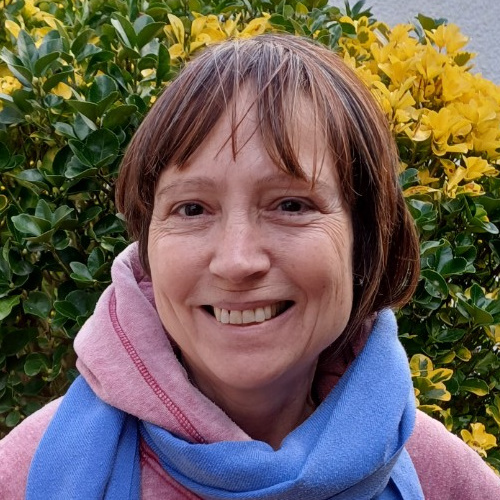Équipe TéSA
Le cœur de TéSA est composé par sa direction, son assistante de direction, ses ingénieurs de recherche et chercheurs associés, présents au quotidien dans les murs de TéSA.

Serge Fabre
Ingénieur de recherche
Signal et Machine Learning
Page personnelle Lire les détails Liste des publications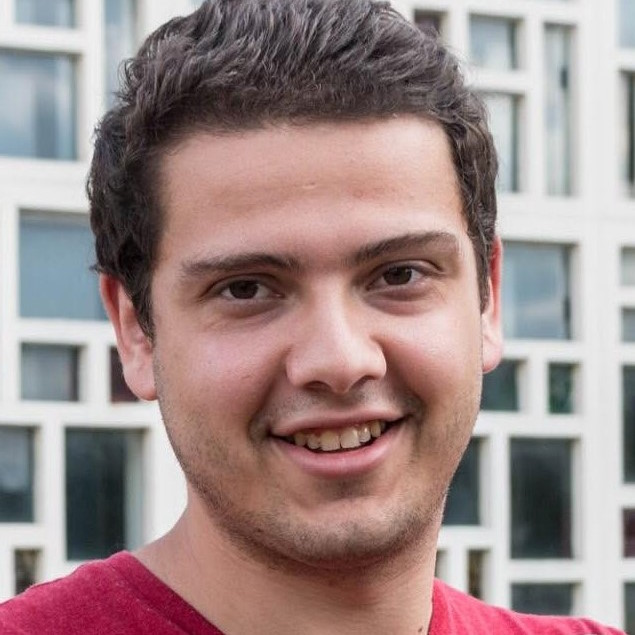
Samy Labsir
Chercheur associé
Traitement statistique du signal
Page personnelle Lire les détails Liste des publications
Bernard Lacaze
Chercheur associé
Processus stochastiques
Page personnelle Lire les détails Liste des publications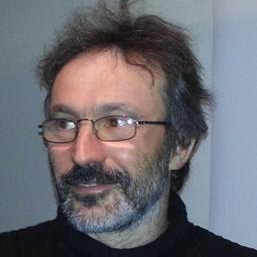
Patrice Michel
Chercheur associé
Traitement du signal
Page personnelle Lire les détails Liste des publications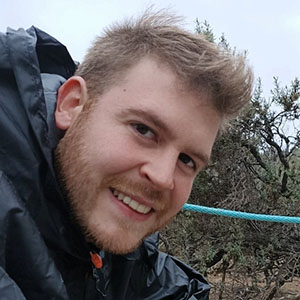
Lorenzo Ortega
Chercheur associé
Traitement du signal
Page personnelle Lire les détails Liste des publications
Philippe Paimblanc
Ingénieur de recherche
Localisation et navigation
Page personnelle Lire les détails Liste des publications
Raoul Prévost
Ingénieur de recherche
Communications numériques
Page personnelle Lire les détails Liste des publications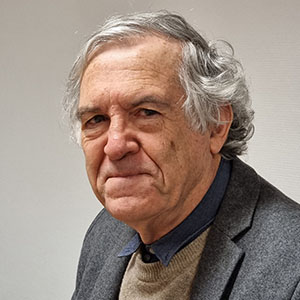
Jacques Sombrin
Chercheur associé
Systèmes satellitaires
Page personnelle Lire les détails Liste des publicationsConseil d'administration
Le Conseil d’administration (CA) de TéSA est composé de représentants des différents membres partenaires, et de la direction de TéSA. Les co-Présidents du Conseil scientifique de TéSA sont invités à chaque réunion.
Les réunions du CA ont lieu tous les deux mois.
Découvrir les membres
- Thierry Floriant (CNES)
Trésorier :
- Elias Bitar (Collins Aerospace)
Secrétaire :
- Xavier Olive (TAS)
Membres :
- Corinne Mailhes (Toulouse INP) ‒ Directrice
Conseil scientifique :
- Laurent Ferro-Famil (ISAE-SUPAERO)
- Riadh Dhaou (Toulouse INP)
Conseil scientifique
Le Conseil scientifique (CS) rassemble les représentants scientifiques des membres associés académiques et des membres partenaires de TéSA, ainsi que des représentants de ses ingénieurs de recherche et de ses doctorants.
Il se réunit au même rythme que le CA et s’occupe de l’animation scientifique de TéSA : organisation de séminaires, de journées scientifiques, rédaction du rapport d’activité biennal, appel à post-docs, à chercheurs invités, etc.
Découvrir les membres
- Laurent Ferro-Famil (ISAE-SUPAERO)
- Riadh Dhaou (Toulouse INP)
Représentants des partenaires académiques et industriels :
- Gentian Jakllari (Toulouse INP)
- Eric Chaumette (ISAE-SUPAERO)
- Antoine Blais (ENAC)
- Guillaume Moreau (IMT Atlantique)
- Islam Bousaada (IPSA)
- Clément Dudal (CNES)
- Cédric Baudoin (TAS)
- Valerian Racaud (Collins Aerospace)
Liaison académique :
- Julien Lesouple (ENAC)
Représentants des doctorants :
- Léa Dubreil (TéSA)
- Valérian Mangé (TéSA)
Représentant des ingénieurs de recherche :
- Philippe Paimblanc (TéSA)
Experts invités :
- Communications numériques : Tarik Benaddi (TAS) et Karine Zidane (TAS)
- Navigation : Lorenzo Ortega (IPSA) et Sébastien Trilles (TAS)
- Réseaux : Emmanuel Lochin (ISAE), Riadh Dhaou (Toulouse INP) et André-Luc Beylot (Toulouse INP)
- Traitement du signal et des images : François Vincent (ISAE-Supaéro)
- Systèmes satellitaires : Jacques Sombrin (TéSA)
- Traitement des images satellitaires : Gwendoline Blanchet (CNES), Vincent Martin (CNES)
- Traitement des images radar : Laurent Ferro-Famil (ISAE)
Invitées :
- Corinne Mailhes (Directrice de TéSA)
- Thierry Floriant (Président de TéSA)
Développement scientifique
L’équipe de développement scientifique a été créée pour prendre des contacts avec de nouveaux partenaires potentiels qui pourraient être intéressés à travailler avec TéSA.
L’équipe est composée de personnes très impliquées dans TéSA, capables de présenter l’organisation et l’expertise de TéSA, en relation étroite avec le Conseil scientifique et la Direction.
Découvrir les membres
- Clémence Pierangelo (Présidente de TéSA)
- Corinne Mailhes (Directrice de TéSA)
- Jacques Sombrin (TéSA)
- Thierry Robert (CNES)
- Mathieu Gineste (TAS)
- Elias Bitar (Collins Aerospace)
- Xavier Barichard (XB coaching, http://www.xbcoaching.fr)
- Eric Luvisutto (SAT Conseil, https://satconseil.eu)
Académiques
L’association fonctionne comme un laboratoire de recherche, piloté par un Conseil scientifique et un Conseil d’administration (voir plus haut) et accueillant dans ses murs des ingénieurs de recherche (voir équipe TéSA) mais aussi les enseignants-chercheurs des membres associés académiques de TéSA, qui peuvent venir consacrer une part de leur temps de recherche dans ses murs.
Doctorants
En tant que laboratoire de recherche, l’une des priorités de TéSA est d’accueillir les étudiants en doctorat.
Retrouvez ci-après les thèses en cours ainsi que toutes les thèses soutenues avec leur résumé, le texte intégral au format PDF et la présentation faite lors de la soutenance (hors thèses confidentielles).
Les thèses en cours :
Yassine Ariouich
Orchestration du Space Edge Computing dans les constellations satellitaires
Financement TAS - TeSA
Début en mars 2025
Page personnelleAlexandre Berezin
Identification modale pour aubes de turboréacteur
Financement CIFRE - SAFRAN Engines
Début en février 2025
Page personnelleRobin Duprat
Design and Processing of GNSS Meta-Signals for Precise Positioning
Financement CNES - TAS
Début en novembre 2024
Page personnelleYoussef Minyari
Intérêt des formes d’ondes MIMO pour les liens FSO feeder pour les SatCom
Financement TAS - IMT Atlantique
Début en novembre 2024
Page personnelleJulien Juaneda
QUIC-PEP for performing VPN over multi-system
Financement CNES - TAS
Début en octobre 2024
Page personnelleYounès Boutiyarzist
Méthodes de fuision de données appliquées avec systèmes de surveillance et de navigation pour hélicoptères
Financement CIFRE - COLLINS Aerospace
Début en décembre 2023
Page personnelleNina Haag
Model based GNSS - Robustness testing using fuzzing techniques
Financement CIFRE - COLLINS Aerospace
Début en décembre 2023
Page personnelleMaurine Bouzeid
Registration and fusion of 3D point clouds
Financement CNES - TSN
Début en novembre 2023
Page personnelleGeoffroy Heurtier
Améliorer la gestion de l’eau : développement d’une approche Machine Learning pour la production de données bathymétriques à partir de données spatiales
Financement CIFRE - CGI
Début en novembre 2023
Page personnelleEstebán Morales Aguirre
Generation of precise and robust observables by GNSS/IMU hybridization
Financement CNES - ISAE
Début en octobre 2023
Page personnelleLéa Dubreil
Traitement par I.A. de mesures GNSS dégradées en entrée d'un algorithme de positionnement hybridé (GNSS-I.A.)
Financement TAS - IPSA
Début en octobre 2023
Page personnelleLinda Kanaan
Machine learning for robust satellite AIS receivers in dense maritime traffic areas - RobAIS
Financement KINEIS - Région Bretagne
Début en février 2023
Page personnelleMarta Bottani
Forest loss monitoring using multi-frequency radar and optical data
Financement CNES - ISAE
Début en novembre 2022
Page personnelleValérian Mangé
FUSion et Corrélation de données Hétérogènes par l'Intelligence Artificielle
Financement CIFRE Nexeya
Début en octobre 2022
Page personnelleJihanne El Haouari
Machine Learning for inverse problem based instrument parameter estimation
Financement CNES - TAS
Début en octobre 2022
Page personnellePaul Grislain
Apport de l'IA pour la caractérisation réseau et la gestion de la ressource SATCOM
Financement TAS - ENAC
Début en octobre 2022
Page personnelleJoan Miguel Bernabeu Frias
Use of phase measurement for precise positioning in a swarm of satellites
Financement CNES - IPSA
Début en octobre 2022
Page personnelleDécouvrir les thèses réalisées
Gastón De Boni Rovella
Machine learning-based Solutions for Channel Decoding in M2M-type Communications
Financement CNES - TAS
Soutenance en décembre 2024
Page personnelle Télécharger la présentation Télécharger la thèse Lire le résuméHamish Scott Mc Phee
Autonomous and Robust Time Scale Algorithm for a Swarm of Nanosatellites
Financement TéSA - CNES
Soutenance en novembre 2024
Page personnelle Télécharger la présentation Télécharger la thèse Lire le résuméEvelyne Akopyan
Fiabilité de l’Architecture Réseau des Systèmes Distribués sur Essaims de Nanosatellites
Financement TéSA - CNES
Soutenance en octobre 2024
Page personnelle Télécharger la présentation Télécharger la thèse Lire le résuméVictor Perrier
LEO/GEO congestion control mechanism based on the contribution of artificial intelligence.
Financement CNES - ISAE Supaéro
Soutenance en mars 2023
Page personnelle Télécharger la présentation Télécharger la thèse Lire le résuméAnouar Jerbi
Non-Coherent Detection of Continuous Phase Modulation for Low Earth Orbit Satellite IoT Communications Affected by Doppler Shift
Financement TAS - IMT Atlantique
Soutenance en mars 2023
Page personnelle Télécharger la présentation Télécharger la thèse Lire le résuméCorentin Lubeigt
Signal Processing for GNSS Reflectometry
Financement CNES - ISAE Supaéro
Soutenance en février 2023
Page personnelle Télécharger la présentation Télécharger la thèse Lire le résuméThomas Verheyde
Precise Cooperative Positioning of Low-Cost Mobiles in an Urban Environment
Financement CNES - TAS
Soutenance en février 2023
Page personnelle Télécharger la présentation Télécharger la thèse Lire le résuméVinicius Alves de Oliveira
Apprentissage profond pour la compression embarquée d'images d'observation de la Terre.
Financement CNES - TAS
Soutenance en octobre 2022
Page personnelle Télécharger la présentation Télécharger la thèse Lire le résuméAmal Boubaker
Performances des Protocoles de Transport dans les Constellations de Satellites
Financement CNES - TAS
Soutenance en mai 2022
Page personnelle Télécharger la présentation Télécharger la thèse Lire le résuméFrançois Lamothe
Le problème de flot insécable: application à la gestion des communications d'une constellation de satellites.
Financement CNES - TAS
Soutenance en novembre 2021
Page personnelle Télécharger la présentation Télécharger la thèse Lire le résuméAdrien Thibaud
Répartition de flux dans les réseaux de contenu, application à un contexte satellite.
Financement TéSA - TAS
Soutenance en septembre 2021
Page personnelle Télécharger la présentation Télécharger la thèse Lire le résuméQuentin Demoulin
Systèmes et Algorithmes de Traitement d'Images pour l'Estimation de Déformées de Structures d'Avion en Vol
Financement AIRBUS
Soutenance en avril 2021
Page personnelle Télécharger la présentation Télécharger la thèse Lire le résuméAnne-Marie Tobie
Hybridation GNSS/5G pour la navigation en milieu urbain
Financement CNES - TAS
Soutenance en février 2021
Page personnelle Télécharger la présentation Télécharger la thèse Lire le résuméAlexandre Tran N'Guyen Hoang
Routeur embarqué pour les communications critiques aéronautiques en environnement multi liens
Financement RCF
Soutenance en janvier 2021
Page personnelle Télécharger la présentation Télécharger la thèse Lire le résuméBarbara Pilastre
Estimation Parcimonieuse et Apprentissage de Dictionnaires pour la Détection d'Anomalies Multivariées dans des Données Mixtes de Télémesure Satellite
Financement CNES - AIRBUS DS
Soutenance en novembre 2020
Page personnelle Télécharger la présentation Télécharger la thèse Lire le résuméSelma Zamoum
Méthodes d'accès aléatoire pour les communications par satellite
Financement CNES - TAS
Soutenance en novembre 2019
Page personnelle Télécharger la présentation Télécharger la thèse Lire le résuméLorenzo Ortega Espluga
Signal optimization for Galileo evolution
Financement CNES - TAS
Soutenance en novembre 2019
Page personnelle Télécharger la présentation Télécharger la thèse Lire le résuméSimone Urbano
Detection and Diagnostic of Freeplay Induced Limit Cycle Oscillation in the Flight Control System of a Civil Aircraft
Financement AIRBUS
Soutenance en avril 2019
Page personnelle Télécharger la présentation Télécharger la thèse Lire le résuméJulien Lesouple
Estimation Parcimonieuse de Biais Multitrajets pour les Systèmes GNSS
Financement CNES - M3 SYSTEMS
Soutenance en mars 2019
Page personnelle Télécharger la présentation Télécharger la thèse Lire le résuméSylvain Cluzel
Système M2M/IoT par satellite pour l'hybridation d'un réseau NB-IoT via une constellation LEO
Financement CNES - TAS
Soutenance en mars 2019
Page personnelle Télécharger la présentation Télécharger la thèse Lire le résuméRomain Chayot
Synchronisation, détection et égalisation de modulation à phase continue dans des canaux sélectifs en temps et en fréquence
Financement CNES - TAS
Soutenance en janvier 2019
Page personnelle Télécharger la présentation Télécharger la thèse Lire le résuméBastien Tauran
On the interaction between transport protocols and link-layer reliability schemes for satellite mobile services
Financement CNES - TAS
Soutenance en décembre 2018
Page personnelle Télécharger la présentation Télécharger la thèse Lire le résuméCharles-Ugo Piat-Durozoi
Nouvelle forme d’onde et récepteur avancé pour la télémesure des futurs lanceurs
Financement CNES - IRIT
Soutenance en novembre 2018
Page personnelle Télécharger la présentation Télécharger la thèse Lire le résuméNabil Kbayer
Advanced Signal Processing Methods for GNSS Positioning with NLOS/Multipath Signals
Financement CNES
Soutenance en octobre 2018
Page personnelle Télécharger la présentation Télécharger la thèse Lire le résuméYoann Couble
Optimisation de la gestion des ressources voie retour
Financement CNES - TAS
Soutenance en septembre 2018
Page personnelle Télécharger la présentation Télécharger la thèse Lire le résuméÉlie Bouttier
Livraison de contenus sur un réseau hybride satellite / terrestre
Financement CNES - TAS
Soutenance en juillet 2018
Page personnelle Télécharger la présentation Télécharger la thèse Lire le résuméLucien Canuet
Reliability of Satellite-to-Ground Optical Communication
Financement CNES - TAS - AIRBUS DS
Soutenance en avril 2018
Page personnelle Télécharger la présentation Télécharger la thèse Lire le résuméFábio Manzoni Vieira
Fusion of AIS and Radar Data for Maritime Surveillance
Financement TAS
Soutenance en novembre 2017
Page personnelle Télécharger la présentation Télécharger la thèse Lire le résuméÉric Asselin
Systèmes de détection et de prévention d'intrusion adaptés au monde aéronautique embarqué
Financement RCF
Soutenance en juin 2017
Page personnelle Télécharger la présentation Télécharger la thèse Lire le résuméKarine Zidane
Improving Synchronous Random Access Schemes for Satellite Communications
Financement CNES - TAS
Soutenance en novembre 2016
Page personnelle Télécharger la présentation Télécharger la thèse Lire le résuméRami Ali Ahmad
Mécanismes de fiabilité bi-directionnels “couches basses” pour les communications par satellite
Financement CNES - TAS
Soutenance en juin 2016
Page personnelle Télécharger la présentation Télécharger la thèse Lire le résuméJean-Adrien Vernhes
Echantillonnage Non Uniforme : Application aux filtrages et aux conversions CAN/CNA (Convertisseurs Analogique-Numérique et Numérique-Analogique) dans les télécommunications par satellite
Financement CNES - TAS
Soutenance en janvier 2016
Page personnelle Télécharger la présentation Télécharger la thèse Lire le résuméTarik Benaddi
Sparse Graph-Based Coding Schemes for Continuous Phase Modulations
Financement CNES - TAS
Soutenance en décembre 2015
Page personnelle Télécharger la présentation Télécharger la thèse Lire le résuméSi Quoc Viet Trang
FLOWER, an Innovative Fuzzy Lower-than-Best-Effort Transport Protocol
Financement CNES - TAS
Soutenance en décembre 2015
Page personnelle Télécharger la présentation Télécharger la thèse Lire le résuméJorge Prendes
New statistical modeling of multi-sensor images with application to change detection
Financement CNES - SONDRA/SUPELEC
Soutenance en octobre 2015
Page personnelle Télécharger la présentation Télécharger la thèse Lire le résuméJean-Baptiste Dupé
Ordonnancement et gestion des ressources pour un système de Télécommunications haut débit : Optimisation de la bande passante satellite
Financement CNES - TAS
Soutenance en octobre 2015
Page personnelle Télécharger la présentation Télécharger la thèse Lire le résuméNil Garcia
Méthodes d'optimisation pour la localisation active et passive des cibles
Financement TéSA
Soutenance en avril 2015
Page personnelle Télécharger la présentation Télécharger la thèse Lire le résuméGuillaume Artero Gallardo
Qualité de service dans des environnements réseaux mobiles, contraints et hétérogènes
Financement RCF
Soutenance en mars 2015
Page personnelle Télécharger la présentation Télécharger la thèse Lire le résuméMarion Roudier
Analysis and Improvement of GNSS Navigation Message Demodulation Performance in Urban Environments
Financement CNES - TAS
Soutenance en janvier 2015
Page personnelle Télécharger la présentation Télécharger la thèse Lire le résuméArnaud Dion
Récepteur de navigation reconfigurable pour applications spatiales
Financement TAS - ISAE Supaéro
Soutenance en septembre 2014
Page personnelle Télécharger la présentation Télécharger la thèse Lire le résuméRenaud Sallantin
Optimisation de bout-en-bout du démarrage des connexions TCP
Financement CNES - TAS
Soutenance en septembre 2014
Page personnelle Télécharger la présentation Télécharger la thèse Lire le résuméPatrice Raveneau
Satellites d'observation et réseaux de capteurs autonomes au service de l'environnement
Financement TéSA
Soutenance en juin 2014
Page personnelle Télécharger la présentation Télécharger la thèse Lire le résuméPaulo Esteves
High-Sensitivity Adaptive GNSS Acquisition Schemes
Financement CNES
Soutenance en mai 2014
Page personnelle Télécharger la présentation Télécharger la thèse Lire le résuméVictor Bissoli Nicolau
Performances de détection et de localisation des terminaux SAR dans le contexte de transition MEOSAR
Financement CNES - TAS
Soutenance en janvier 2014
Page personnelle Télécharger la présentation Télécharger la thèse Lire le résuméSébastien Roche
Méthodes de poursuite de phase pour signaux GNSS multifréquence en environnement dégradé
Financement CNES - TAS
Soutenance en décembre 2013
Page personnelle Télécharger la présentation Télécharger la thèse Lire le résuméAude Bourdeau
Approches avancées de navigation par signaux GNSS en environnement urbain utilisant un modèle 3D
Financement TAS - DGA
Soutenance en décembre 2013
Page personnelle Télécharger la présentation Télécharger la thèse Lire le résuméZhongxun Liu
Modélisation des signatures radar des tourbillons de sillage par temps de pluie
Financement ONERA
Soutenance en mai 2013
Page personnelle Télécharger la présentation Télécharger la thèse Lire le résuméFlorian Cazes
Méthodes de traitement innovantes pour les systèmes de commandes de vol
Financement AIRBUS
Soutenance en mars 2013
Page personnelle Télécharger la présentation Télécharger la thèse Lire le résuméSébastien Carcanague
Algorithmes de réception GNSS multifréquence pour positionnement précis
Financement M3 SYSTEMS
Soutenance en février 2013
Page personnelle Télécharger la présentation Télécharger la thèse Lire le résuméJean-Philippe Goy
Détection d'obstacles et de cibles de collision par un radar FMCW aéroporté
Financement RCF
Soutenance en décembre 2012
Page personnelle Télécharger la présentation Télécharger la thèse Lire le résuméRémi Diana
Le routage dans les réseaux DTN : du cas pratique des réseaux satellitaires quasi-déterministes à la modélisation théorique
Financement CNES - TAS
Soutenance en décembre 2012
Page personnelle Télécharger la présentation Télécharger la thèse Lire le résuméHugo Meric
Codage par superposition pour les communications par satellite
Financement CNES - TAS
Soutenance en novembre 2012
Page personnelle Télécharger la présentation Télécharger la thèse Lire le résuméDamien Serant
Algorithmes avances de traitement du signal pour réception des signaux GNSS et OFDM
Financement CNES - TAS
Soutenance en novembre 2012
Page personnelle Télécharger la présentation Télécharger la thèse Lire le résuméRaoul Prévost
Décodage et localisation AIS par satellite
Financement CNES - DGA
Soutenance en octobre 2012
Page personnelle Télécharger la présentation Télécharger la thèse Lire le résuméClément Dudal
Etude de la forme d'onde et d'un récepteur pour des systèmes de diffusion par satellite haute capacité
Financement TéSA - TAS
Soutenance en octobre 2012
Page personnelle Télécharger la présentation Télécharger la thèse Lire le résuméCarlos Daniel Salós Andrés
Contrôle d’intégrité appliqué à la réception des signaux GNSS en environnement urbain
Financement CNES - TAS
Soutenance en juillet 2012
Page personnelle Télécharger la présentation Télécharger la thèse Lire le résuméChao Lin
Analyse des ondes P et T des signaux ECG à l'aide de méthodes Bayésiennes
Financement TéSA
Soutenance en juillet 2012
Page personnelle Télécharger la présentation Télécharger la thèse Lire le résuméThomas Ferrandiz
Maîtrise des latences de communication dans les réseaux bord SpaceWire
Financement CNES - TAS
Soutenance en mars 2012
Page personnelle Télécharger la présentation Télécharger la thèse Lire le résuméFabrice Hobaya
Convergence vers IP des systèmes de télécommunication par satellite
Financement CNES - TAS
Soutenance en septembre 2011
Page personnelle Télécharger la présentation Télécharger la thèse Lire le résuméDavid Pradas
Conception et méthodologie cross-layer pour les réseaux satellite à haut débit
Financement CNES
Soutenance en septembre 2011
Page personnelle Télécharger la présentation Télécharger la thèse Lire le résuméCarlos Giraldo Rodriguez
Manet Routing Assisted by Satellites
Financement TAS - Telecom Bretagne
Soutenance en avril 2011
Page personnelle Télécharger la présentation Télécharger la thèse Lire le résuméFares Fares
Traitement des signaux ARGOS 4
Financement CNES - TAS
Soutenance en mars 2011
Page personnelle Télécharger la présentation Télécharger la thèse Lire le résuméAmine Bouabdallah
Contributions à la fiabilisation du transport de la vidéo
Financement CNES - TAS
Soutenance en décembre 2010
Page personnelle Télécharger la présentation Télécharger la thèse Lire le résuméPaul Thevenon
Interface air pour systèmes de navigation en bande S : étude détaillée des signaux OFDM
Financement CNES - TAS
Soutenance en novembre 2010
Page personnelle Télécharger la présentation Télécharger la thèse Lire le résuméAxel Garcia Pena
Optimisation de la Performance de Démodulation des Messages de Navigation GPS et GALILEO
Financement CNES - TAS
Soutenance en octobre 2010
Page personnelle Télécharger la présentation Télécharger la thèse Lire le résuméChristophe Ouzeau
Degraded Modes Resulting From the Multi Constellation Use of GNSS
Financement DTI
Soutenance en juillet 2010
Page personnelle Télécharger la présentation Télécharger la thèse Lire le résuméJulien Montesinos
Traitement d'antenne SDMA pour système de télécommunications par satellite avec couverture dispersée
Financement TAS
Soutenance en novembre 2009
Page personnelle Télécharger la présentation Télécharger la thèse Lire le résuméMariana Spangeberg
Safe Navigation for Vehicles
Financement TAS
Soutenance en juin 2009
Page personnelle Télécharger la présentation Télécharger la thèse Lire le résuméAnh Tai Ho
Application des techniques multiporteuses OFDM pour futurs systèmes de télécommunications par satellite
Financement CNES - TAS
Soutenance en mars 2009
Page personnelle Télécharger la présentation Télécharger la thèse Lire le résuméBenjamin Chibout
Traitement des signaux boc pour la radionavigation
Financement CNES - TAS
Soutenance en décembre 2008
Page personnelle Télécharger la présentation Télécharger la thèse Lire le résuméXavier Delaunay
Compression d'images satellite par post-transformées dans le domaine ondelettes
Financement CNES
Soutenance en novembre 2008
Page personnelle Télécharger la présentation Télécharger la thèse Lire le résuméEmmanuel Dubois
Convergence dans les réseaux satellite
Financement TAS
Soutenance en novembre 2008
Page personnelle Télécharger la présentation Télécharger la thèse Lire le résuméAnchalee Puengnim
Classification de modulations linéaires et non-linéaires à l’aide de méthodes Bayésiennes
Financement CNES
Soutenance en septembre 2008
Page personnelle Télécharger la présentation Télécharger la thèse Lire le résuméLucile Canourgues
Algorithmes de Routage dans les Réseaux Mobile Ad hoc Tactique à Grande Echelle
Financement RCF
Soutenance en mai 2008
Page personnelle Télécharger la présentation Télécharger la thèse Lire le résuméJuan Cantillo
Codage multi-couches pour systèmes de communication par satellites
Financement TAS
Soutenance en mai 2008
Page personnelle Télécharger la présentation Télécharger la thèse Lire le résuméFerdinand Tra
Contrôle d’Admission des Connexions pour les Systèmes de Télécommunication par Satellite avec des Liaisons Physiques Adaptatives
Financement TAS
Soutenance en janvier 2008
Page personnelle Télécharger la présentation Télécharger la thèse Lire le résuméHanna El Natour
Techniques avancées de traitement du signal GPS pour les services LBS
Financement TAS
Soutenance en juillet 2007
Page personnelle Télécharger la présentation Télécharger la thèse Lire le résuméEmmanuel Christophe
Compression des Images Hyperspectrales et son Impact sur la Qualité des Données
Financement CNES - TAS
Soutenance en octobre 2006
Page personnelle Télécharger la présentation Télécharger la thèse Lire le résuméJean-Pierre Millerioux
Techniques de détection multi-utilisateurs pour les communications multifaisceaux par satellite
Financement CNES - TAS
Soutenance en septembre 2006
Page personnelle Télécharger la présentation Télécharger la thèse Lire le résuméPostdocs
En tant que laboratoire de recherche, TéSA accueille des chercheurs postdoctoraux (postdocs).
Retrouvez ci-après la liste des postdocs actuels et passés.
Les postdocs en cours :
Hamish Scott Mc Phee
Echelle de temps autonome robuste aux erreirs d'horloges pour les essaims de satellites
Financement TéSA - TAS
Début en février 2025
Page personnelleDaouda Pene
Development of new supervised methods based on Gaussian process on Lie groups. Application to image registration
Financement IPSA
Début en janvier 2025
Page personnelleArthur Renaudeau
Démosaïquage d’images acquises par filtres matriciels multispectraux
Financement CNES
Début en juin 2024
Page personnelleVoir les postdocs précédents
Kin Mimouni
Intégrité pour les récepteurs nouvelles générations
Financement TéSA - TAS
Fin en 2023 (18 mois)
Page personnelleLorenzo Ortega Espluga
GNSS robuste en environnement contraint
Financement TéSA - ISAE Supaéro
Fin en 2021 (18 mois)
Page personnelleJulien Lesouple
Détection séquentielles d’anomalies pour la télémesure satellite avec retour utilisateur
Financement TéSA - TAS
Fin en 2021 (18 mois)
Page personnelleRaoul Prévost
Hybridation GNSS - UWB
Financement TeSA - BPI France/Eurostars
Fin en 2015 (24 mois)
Page personnelleTuan Tran Thai
Analyse de l'intégration de codes à effacement pour l'architecture DTB spatiale
Financement CNES
Fin en 2014 (13 mois)
Page personnelleMarcin Chochol
Simulateur couche physique optique
Financement CNES
Fin en 2014 (8 mois)
Page personnelleRomain Tajan
Nouvelles formes d'ondes pour des communications aéronautiques à forte efficacité spectrale
Financement CNES
Fin en 2014 (8 mois)
Page personnelleJames Mure-Dubois
Study of radar processing applied to the automotive active safety
Financement DGCIS
Fin en 2011 (24 mois)
Page personnellePhilippe Paimblanc
Traitement du signal en sortie d'antenne sur équipement DF-430
Financement RCF
Fin en 2006 (12 mois)
Page personnelleADRESSE
7 boulevard de la Gare
31500 Toulouse
France

